Plant Lovers’ Almanac: Glorious color bursts forth in Ohio
Mild weather passed into pre-summer infernos and back to a mild weather weekend and then back to heat: something for everyone.
Strawberries have arrived, though extended earlier wetness has made the crop somewhat smaller for some. Ah, but strawberry rhubarb pie cannot be topped — except by ice cream.
More: Plant Lovers' Almanac: Readers wonder what's attacking their plants
Catalpas and tree lilacs are blooming with extravagance if not gracefulness, and our native bladdernut trees are expanding their capacity.
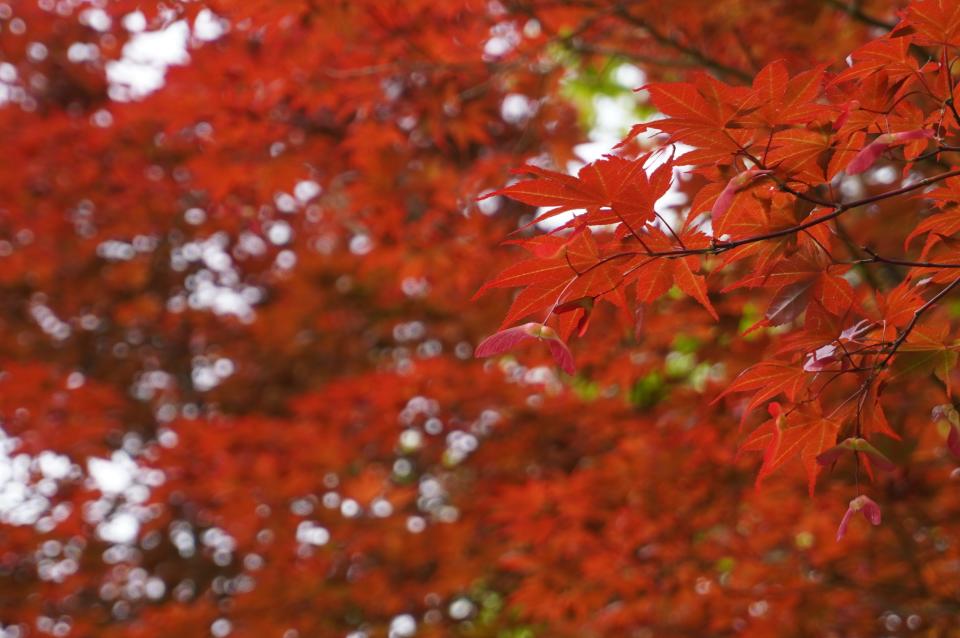
Check out the nuances of red-leaved Japanese maples with bright red helicopter fruits lit by the evening sun.
Penstemon. This perennial is a real stunner now at Secrest Arboretum with swales of the trademarked Dakota Burgundy penstemon (or beardtongue) with its tubular, five-parted, lipped, pinkish-purple flowers.
The foliage is a purple-black color and the overall effect will be attractive for months. Penstemons are tough plants, with many species effective in xeriscape landscapes in the western United States. They are a native genus with over 250 species and according to some published floras, “it is the largest genus of flowering plants endemic to North America.”
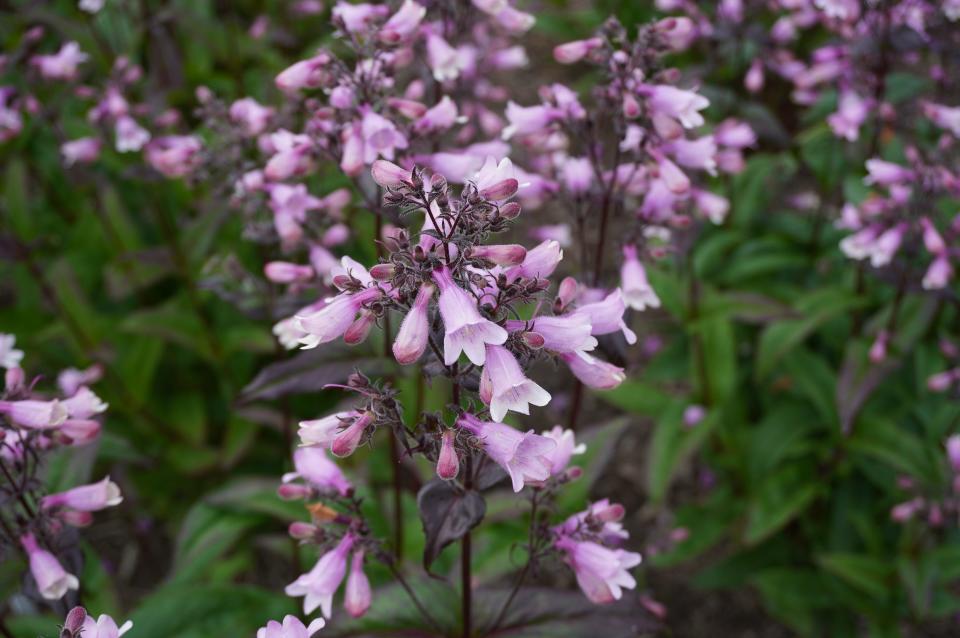
The hairiness and tongue-like flower parts give it the name “beardtongue.” Penstemon is in the Plantaginaceae family, along with plants such as veronica, foxglove, and, of course, plantain. If you check it out in the older wildflower manuals, you will see that it was previously classified as a member of the Scrophulariaceae, the snapdragon family, easy enough to imagine due to the similarity of the flowers. In my new experience, it is a nice cut flower for vases though they do not last a particularly long time.
Redbud. This is one of my favorite small native trees, the understory partner of flowering dogwood in the spring, a great show of elegant pink-purple flowers before plants have foliated.
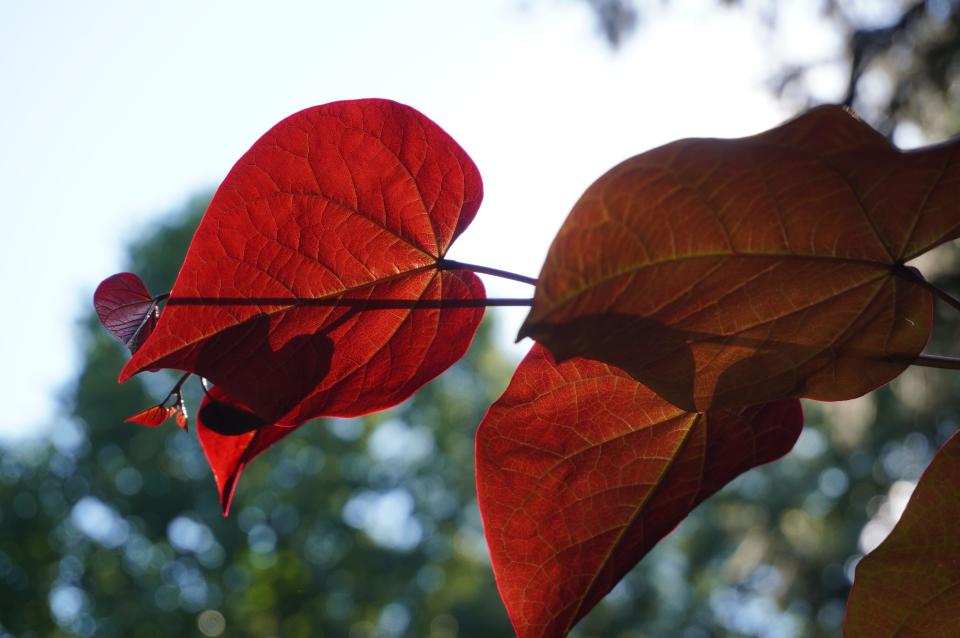
In recent years, horticulturists have selected a number of increasingly incredible variants: those with purple, apricot or yellow leaves, variegated leaves, thick and shiny leaves, weepers, flower-types with pom-pom shapes, and on and on. In addition to a half-dozen volunteer seedlings of the straight species in my yard, descendants of a tree demolished from a large falling silver maple branch, we have a number of the newer variants, from ‘Burgundy Hearts,’ a purple-leaved form resplendent when back-lit from the sun, to ‘Little Woody’ with roughened rugose leaves, to that “Pink Pom Poms’ beauty with double flowers, and ‘Ace of Hearts’ (redbuds have heart-shaped leaves).
There are two dozen of these redbud cultivars highlighted in Michael Dirr’s and Keith Warren’s “The Tree Book,” published in 2019, but redbud fanciers continue to add to the mix. While at Secrest Arboretum’s Garden Fair last weekend, there in the Wellness Garden, backlit by the light, was yet another redbud I must become more acquainted with, a J.C. Raulston Arboretum cultivar, known by its patented name, Flame Thrower. Leaf colors of burgundy, maturing to orange, yellow, and green to go along with the pink-purple flowers of earlier spring. It is intensely beautiful. Go forth, and buy a redbud.
Six-Legged Secrest. Ohio State University’s arboretum in Wooster will host a program on “Good Bugs, Bad Bugs” from 10 a.m. to 4 p.m. Thursday, June 23.
The program features the good Denise Ellsworth, OSU program director of pollinator education, and her program on insect pollinators, the good OSU entomologist Roger Downer featuring moths and more moths, and finally, the bad, Jim Chatfield, featuring everything from beetlemania to mosquito madness.
Join us for a day of samples and quizzes, snacks and lunch, and a good amount of time outdoors enjoying the good plants and insects and a few bad bugs. Cost is $40 for the day. To register, visit https://secrest.osu.edu/ or call Paul Snyder at 330-263-3761.
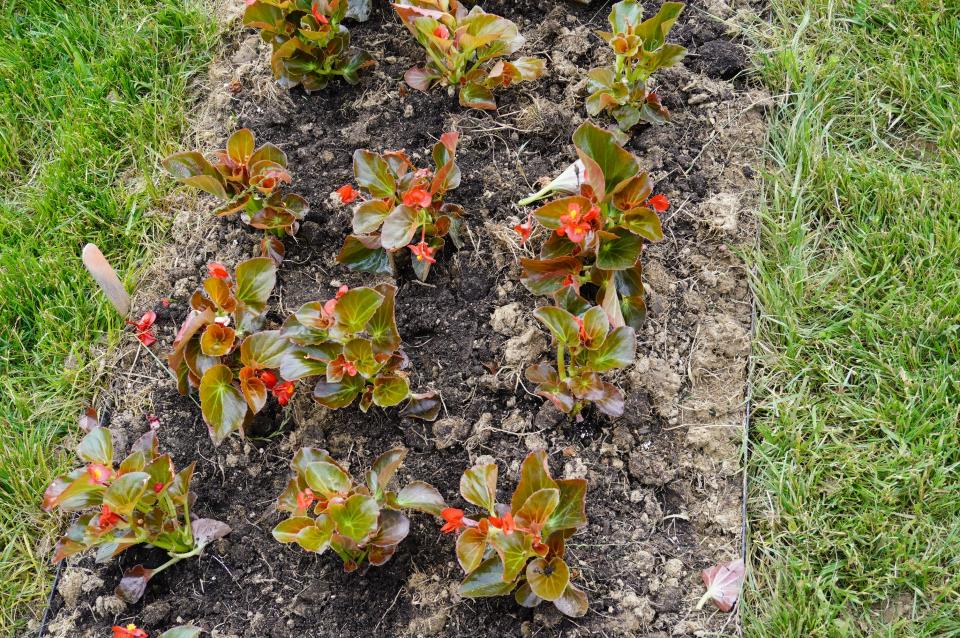
Begonias. Begonias are incredibly diverse in flower and leaf, with over 2,000 species worldwide. In natural settings, they like tropical and semi-tropical climes but do quite well in our Ohio gardens, especially in shady or semi-shady sites.
Wax begonias are the classic shade flower for gardens, often paired with fellow shade-lovers, coleus and impatiens. I have enjoyed yellow-flowered begonias in my office this spring and a number of different types in the yard.
Recently, one of the Big Begonia series, the Red Bronze Leaf type, debuted in the new initials for OSU’s Wooster campus.
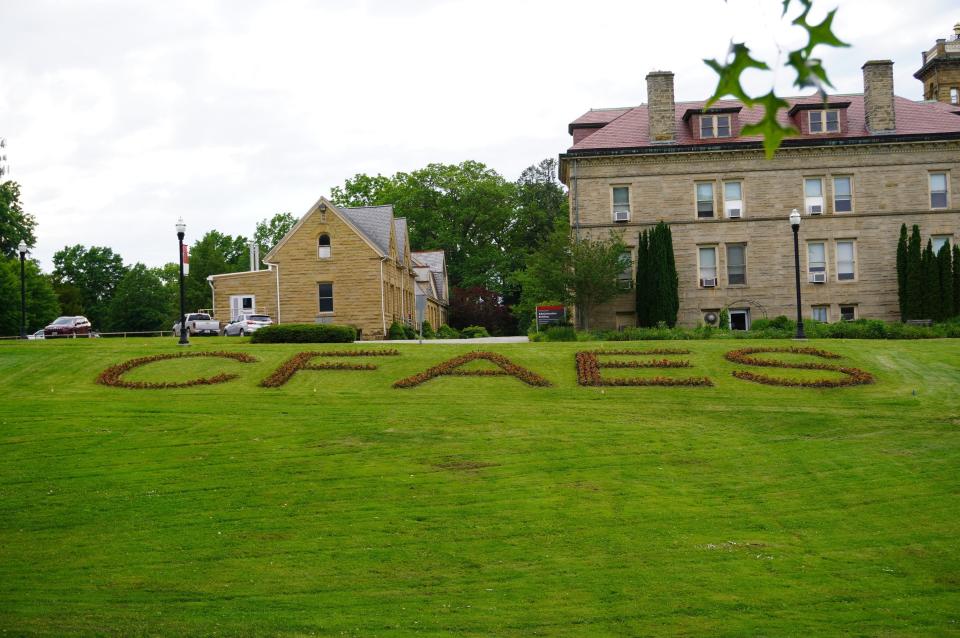
The campus makes up the Ohio Agricultural Research and Development Center (OARDC) with over 100 years of agricultural research and the Agricultural Technical Institute (ATI). Together they are identified now as the CFAES (College of Food, Agricultural and Environmental Sciences) Wooster campus of OSU. If you forget that acronym, just look at those begonias spelling out those letters on an oak-shaded hillside near the Old Administration Building on the campus. Then take a stroll through the bucolic campus and out into Secrest Arboretum.
Biomass. Last week, I mentioned the incredible estimate that there are over 60 billion nematodes on earth, the vast majority of which are microscopic in size, for each human on Earth. These types of realizations of the vastness of the tiny microscopic realm of life are often mind-boggling.
Here is another one from an essay in “The Anthropocene Reviewed” (2021) by John Green, a lively book of short and often humorous observations. Green notes that: “The total combined weight of all living humans currently on Earth is around 365 million tons … We are all dwarfed by bacteria, though. According to one recent estimate, the biomass of bacteria is about 35 times larger than the combined biomass of all animals.”
Pretty good for one-celled organisms. We are not alone!

Nematode Redux. Finally, in the latest on nematodes, here is an admittedly minor pleasure of a little item on some nematode research I read about while in the lovely atmosphere of the Timken Science Library at the College of Wooster a few weeks ago.
It is from the May 14, 2022, issue of “New Scientist” and involves an experiment with the nematode Caenorhabditis elegans, a widely studied free-living nematode species. Possibly bored researchers put 60 of these nematodes on one side of a toxic copper barrier. Half of the nematodes had been recently fed, the other half had not eaten for three hours.
On the other side of the barricade was the smell of buttered popcorn, presumably savored by these nematodes. While 80% of the hungry nematodes braved the copper, only 20% of the well-fed nematodes risked it; after the hungry nematodes were fed, they mirrored the percentages of the sated nematodes.
Things do get a little squirrely in the lab late at night sometimes! Film at 11.
Jim Chatfield is a horticulture educator and professor emeritus at Ohio State University Extension. If you have questions about caring for your garden and other topics, write to chatfield.1@osu.edu or call 330-466-0270. Please include your phone number if you write.
More: Plant Lovers' Almanac: Readers wonder what's attacking their plants
This article originally appeared on Akron Beacon Journal: Plant Lovers’ Almanac: Glorious color bursts forth in Ohio

